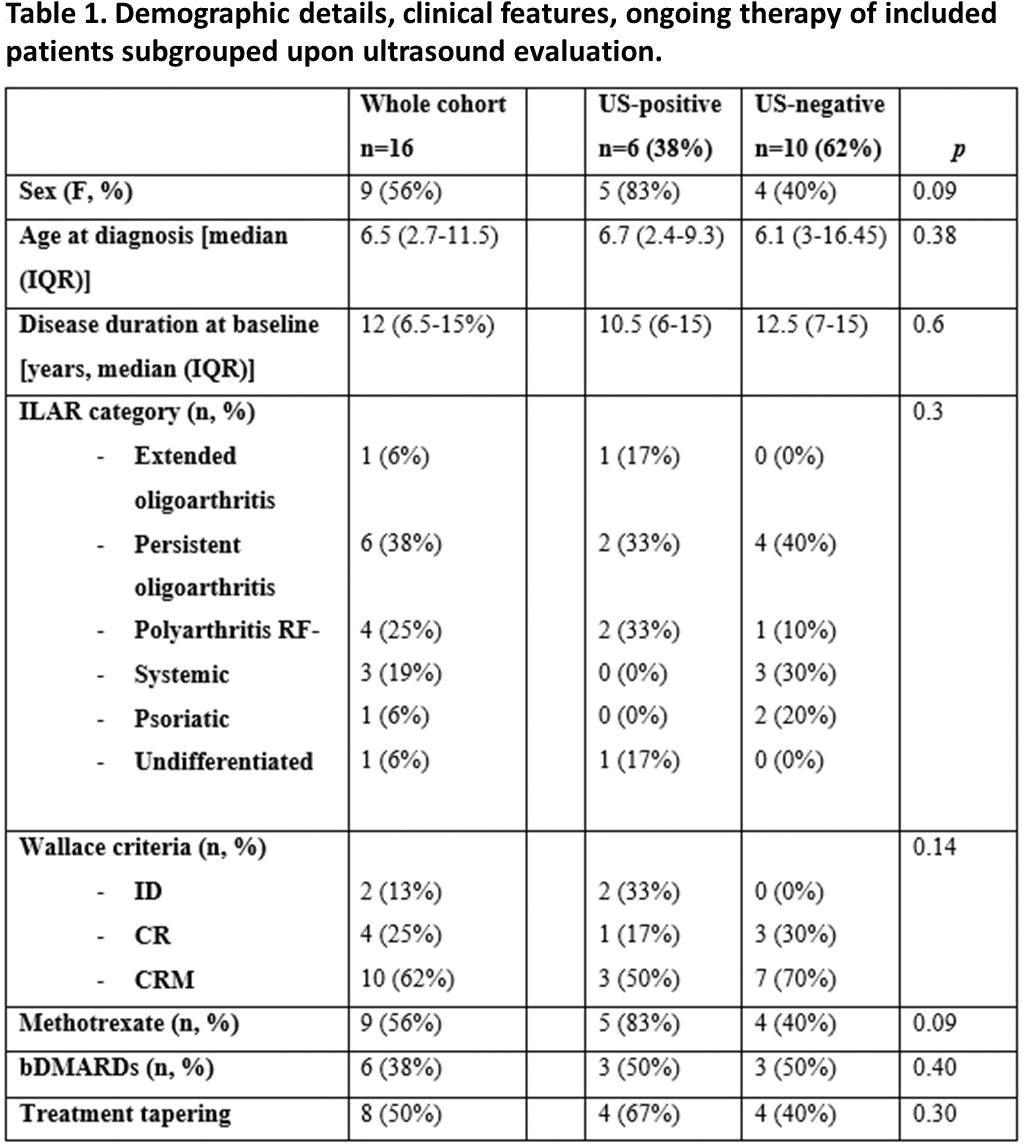

Background: The transition from pediatric to adult care of patients affected by juvenile idiopathic arthritis (JIA) represents a complex process. A recent retrospective study has shown that in an early adulthood cohort, one in four patients still had an active disease and one in two were in remission on medication. Ultrasound could provide support in the treatment management of patients with clinical inactive disease (CID); nevertheless, data about the prevalence and the prognostic role of ultrasound-detected subclinical synovitis are scarce and controversial.
Objectives: Objective of this study is to evaluate the power of subclinical synovitis to predict flare in patients over 16 years old in CID. Secondary endpoints are to determine the prevalence of subclinical synovitis in a cohort of JIA in CID and possible clinical variables related to disease relapse.
Methods: This monocentric study recruited JIA patients aged more than 16 years in clinical remission, according to Wallace criteria. Data about ultrasound assessment at baseline, demographic details, clinical features, ILAR category, disease activity status, flares, and ongoing/previous treatments were retrospectively reviewed for a 6-year follow-up. At baseline, 44 joints were scanned to detect the presence of synovial hyperplasia/joint effusion and Power-Doppler signal (PD).
Results: The study included 16 patients with US evaluation at baseline (56% women with predominant oligoarticular/polyarticular JIA subtypes and a median disease duration of 12 years).
6/16 (38%) patients displayed US-detected subclinical synovitis: abnormalities in grey scale examination were found in 6/6 (100%), whereas PD signal was detected in 4/6 (66%) cases. This data is consistent with previous studies: in literature, the prevalence of subclinical synovitis in JIA ranges from 23% to 67%. During the follow-up, a disease flare occurred in 11/16 (69%) subjects. 5/6 (83%) were US-positive and 6/10 (60%) were US-negative, without a statistically significant difference (p=0.58). Flare was not related to any demographic or clinical variable, except for treatment management. All patients undergoing bDMARDs tapering displayed a disease reactivation; conversely, flares occurred only in 4/10 (40%) patients taking methotrexate or no therapy (p=0.03).
Conclusion: The present study provides a first evaluation of the prognostic role of US-detected subclinical synovitis in JIA during the transition phase. Although subclinical US-detected synovitis doesn’t show to predict disease relapse, a wider cohort and prospective studies are needed to determine the value of ultrasound in the challenging management of inactive JIA.
REFERENCES: [1] Chhabra A, Robinson C, Houghton K, Cabral DA, Morishita K, Tucker LB, Petty RE, Larché M, Batthish M, Guzman J. Long-term outcomes and disease course of children with juvenile idiopathic arthritis in the ReACCh-Out cohort: a two-centre experience. Rheumatology (Oxford). 2020 Dec 1;59(12):3727-3730.
[2] De Lucia O, Ravagnani V, Pregnolato F, Hila A, Pontikaki I, Gattinara M, Romano M, Gerloni V, Pieropan S, Murgo A, Rossini M, Cimaz R, Meroni PL. Baseline ultrasound examination as possible predictor of relapse in patients affected by juvenile idiopathic arthritis (JIA). Ann Rheum Dis. 2018 Oct;77(10):1426-1431.

Acknowledgements: NIL.
Disclosure of Interests: None declared.